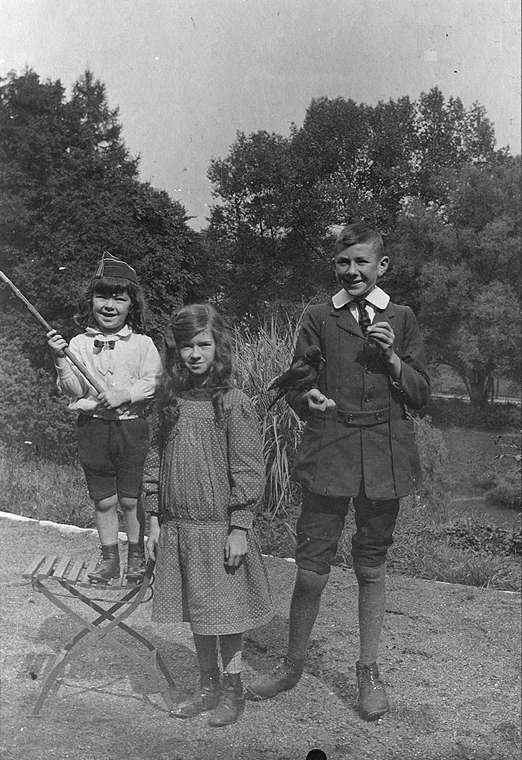
German Eton Collars: Social Class

Figure 1.-- Here we ee three children in what looks like extensive grounds of an estate. (The chair suggests that is a private estate abd not apark.) We think that they are from a wealthy family, both because of the extensive estate and
the little boys's long har. The older boy wears a Norfolk suit with an Eton-like collar. The photograph looks to have been taken about 1915.
|
|
Social class is commonly an important factor in clothing and fashion, especially before World War II. Many of the German boys we notice wearing Eton collars seem to come from affluent (both middle-class and upper-class) families. This is just our preliminary assessment at this time. Of course it is a little tricky assessingh this from unidentified photographs. Upper-class Germans may have been flunting an English look--considerd vety fashionable among some German circles. A similar phenomenon occurred in America. Eton collars seem less common almong the working class. In Britain the Eton collar was widely worn by boys of all classes. This seems to be less true in Germany. We are not sure if this image changed over time.
HBC

Navigate the Historic Boys' Clothing Web Site:
[Return to the Main German Eton collar page]
[Return to the Main Eton collar nationality page]
[Introduction]
[Activities]
[Biographies]
[Chronology]
[Clothing styles]
[Countries]
[Girls]
[Photography]
[Bibliographies]
[Contributions]
[Essays]
[FAQs]
[German glossary]
[Images]
[Links]
[Registration]
[Tools]
[Boys' Clothing Home]
Navigate the Historic Boys' Clothing Web chronological pages:
[The 1840s]
[The 1850s]
[The 1860s]
[The 1870s]
[The 1880s]
[The 1890s]
[The 1900s]
[The 1910s]
[The 1920s]
[The 1930s]
[The 1940s]
Navigate the Historic Boys' Clothing Web style pages:
[Long pants]
[Knickers]
[Short pants]
[Scottish kilts]
[School uniform]
[Sailor suits]
[Eton suits]
[Ring bearer/page costumes]
Created: 2:35 AM 6/3/2009
Last updated: 2:35 AM 6/3/2009



